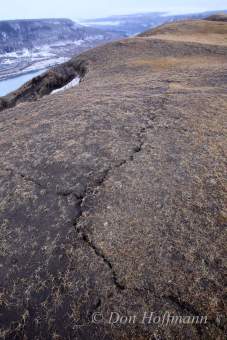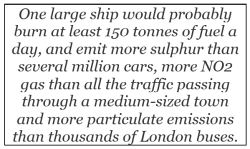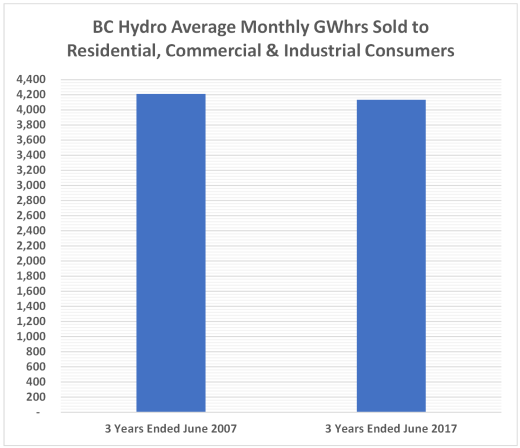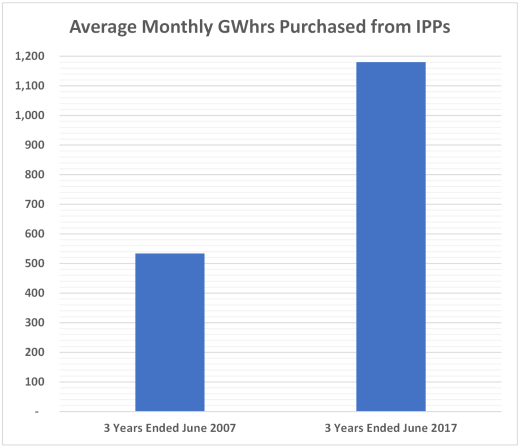British Columbia Utilities Commission will release its second Site C report on November 1. I expect this will provide further information but not a definitive recommendation. But, of course, the buck stops at John Horgan’s cabinet table.
 In 2014, Bill Bennett provided assurance that, unlike numerous Liberal megaprojects with runaway costs, the $7.9 billion Site C dam budget was final, fully reviewed by specialists and reliable because it included a contingency well above prudent amounts.
In 2014, Bill Bennett provided assurance that, unlike numerous Liberal megaprojects with runaway costs, the $7.9 billion Site C dam budget was final, fully reviewed by specialists and reliable because it included a contingency well above prudent amounts.
Nothing left to chance, uncertainty or politics because the budget was developed by the world’s top experts, said Bennett.
Well, more recently the number was $8.8 billion and that was before BC Hydro admitted to a $610 million overrun in its work to date. The geotechnical challenges are unresolved and the real cost is unknown. Some experts predict the budget could still rise as much as $3 billion.
Writing at The Tyee, Bill Tieleman listed the arguments for and against completion made by proponents and opponents:

Mr. Tieleman predicts the project will be suspended but not cancelled. I believe that would be the second best alternative .
The listed arguments in favour of the project are weak or faulty:
- Site C might produce about 10% of what is presently consumed in British Columbia. Right now, there are 2.1 million households in the province so it is more accurate to say that Site C would provide enough power for an additional 210,000 residences. Improved efficiencies and conservation could save an equal amount if addressed seriously.
- BC Hydro overstates Site C production by about 15%. In the past five years, the average annual production per MW of hydro capacity is 4.1 GWh. The utility predicts Site C output will be significantly higher. Given their track record of misinformation on load forecasting, we can be reasonably sure they are misstating the benefits of the new dam.
 The impact of electrical vehicles over the next decade will be far less than proponents predict. Very few are sold in British Columbia now and the extra capital cost and drivers’ range anxiety, particularly outside urban areas, ensures little change is likely in the next decade. Internal combustion engines have improved significantly in fuel burn and emissions and one manufacturer expects to employ new gasoline engine technology by 2019 that will be 45% more fuel-efficient than its engines of ten years ago. Improving marine engines could provide more benefit than changing to electric cars.
The impact of electrical vehicles over the next decade will be far less than proponents predict. Very few are sold in British Columbia now and the extra capital cost and drivers’ range anxiety, particularly outside urban areas, ensures little change is likely in the next decade. Internal combustion engines have improved significantly in fuel burn and emissions and one manufacturer expects to employ new gasoline engine technology by 2019 that will be 45% more fuel-efficient than its engines of ten years ago. Improving marine engines could provide more benefit than changing to electric cars.- Reservoirs are a major source of greenhouse gases and, if we believe that vehicle electrification is positive, achieving that through hydro power may result in little or no benefit. Solar power would be a better choice.
- British Columbians trying to justify Site C power by selling it to Alberta are fools. In recent years, the wholesale price of electricity in the neighbouring province averaged between 2¢ and 4¢ per KWh, about one third of BC Hydro’s marginal cost of power. The wholesale price even touched zero on a few occasions. Alberta’s new privately owned Shepard power station produces electricity at a cost far below that of Site C. Suppliers already plan new gas-fired generation facilities and Alberta will not be buying BC power unless we sell it at a substantial loss.
- Completing the Peace River project may provide power more cheaply than it might cost in the future but that is not a valid argument if alternative sources of power cost less now and, according to established trends, will cost even less in the future.
- British Columbia already has a huge volume of stored power potential. Prudent utility management requires that but it does not have to be exclusive. If we introduce wind and solar, hydro power can be saved during hours when those new sources are plentiful and used when they are not.
The Tyee article didn’t include job provision as an argument in favour of continuing Site C but proponents, particularly the contractors hoping to profit from construction, always raise that consideration. The direct jobs affected by project cessation are rather less than claimed. A large portion of current workers would be redeployed by their employers. Many would find work in projects that have more social and economic value to British Columbia.
The Horgan Government has addressed many important issues in its first three months. It now must find the nerve to make the right choice for BC Hydro and consumers of electricity. Proceeding with Site C without independent review was a major Liberal blunder.
If you are trying to get out of a hole, the first act is to stop digging.
The economic and cultural factors say stop Site C now.
Political considerations dictate the same response. This a Christy Clark Liberal boondoggle. Let that party wear the responsibility.
Voters will punish the Liberals and that political party will regret their folly for years to come.


Note: BC Hydro’s own facilities were called on for less power in the 3-year period ended June 2017 than in the 3-year period ended June 2007. By the way, the utility’s own generating capacity is 15% greater in 2017 than it was in 2007.
In 2015, Scientific American published The Price of Solar Is Declining to Unprecedented Lows:
Perhaps the most interesting piece of data to come out in the latest Lawrence Berkeley National Lab reports is the trend in the price of solar power purchase agreements or PPAs. These prices reflect the price paid for long-term contracts for the bulk purchase of solar electricity. The latest data show that the 2015 solar PPA price fell below $50 per megawatt-hour (or 5 cents per kilowatt-hour) in 4 of the 5 regions analyzed.
The price of utility scale solar power has fallen further since then, to a level about half of the projected cost of electricity generated at Site C.




Here’s a useful synopsis of the BCUC report. From Robert McCullough, in the BIV on-line magazine: https://www.biv.com/article/2017/11/bcuc-performed-impossible-task-efficiently-and-acc/
His closing paragraph: “With these economic considerations in mind, the way forward seems clear: cancellation. The billions saved can be put to good use in education, infrastructure and the creation of long-term jobs, including far more lifelong high-paying careers for many more workers than the Site C project would provide in its lifetime. The facts have now been set out in a coherent, well-written document for everyone to see. The BCUC took on a momentous challenge and delivered admirably.”
LikeLike
Hello Norm: I sent this note to Premier John Horgan and MLA’s hoping they will look for the crooks who may have cheated BC. Christy Clark’s prime minister friend from Indonesia is on the list. I hope others will want to see the Paradise Paper’s names of the possible Liberal thieves,.
Site C Dam”tax haven” money must be repaid and land restored..
“The Paradise Papers have indicated that Canadians are involved in “tax havens”. The NDP Cabinet should reveal any names that were involved in building the Site C Dam that are in the Paradise Papers.
If Christy Clark, BC Hydro executive/ directors or any of the donor/contractors are implicated, they should be brought before the CRA . Penalties and repayment must go toward the restoration of Peace River farmland and helping the First Nations plus 2200 alternative Green energy jobs.
Here is your opportunity for terminating Site C guilt free, deception revealed, fixed contracts agreements opened, tax cheats exposed and strong NDP leadership on behalf of the BC taxpayers. The BC Liberals would do it to you and deserve to be brought to justice.”
https://www.theglobeandmail.com/news/national/cra-vows-action-on-canadian-tax-evaders-amid-paradise-papers-leak/article36840371/
LikeLike
If the “Fast Ferries” are a template, the Site C boondoggle once cancelled will soon become a political white elephant reviled by the masses.
I believe electricity from Site C eventually could become an asset to B.C. and BC Hydro but with electricity demand running flat there is no real push to rush its completion; it obviously was mainly a hobby horse or Trojan horse accelerated to serve as a diversion smokescreen by the desperate old Christy Lieberals as well as another payoff to partisan donors; it was an ego trip more than an eco trip.
Eventually both the power from Site C and the fresh water collected and stored by it will be assets for B.C. but that is several decades away.
A compromise might be to slow-track it using only local labour.
Meanwhile let’s make sure the Horgan New Democrats do NOT shut down the Burrard thermal generating station, which they might try to do as some misguided nod to off-carbon energy politics; in the real world #bcpoli very much needs Burrard as a back-up supplier of electricity for the Lower Mainland (in the event any transmission lines go down), a shaper of surplus power exports (to earn top dollar) and a market for surplus natural gas.
B.C.’s energy supply mix is among the best in the world; we should use all of it to our advantage, including using rail cars to carry Alberta’s surplus crude oils to tidewater docks – perhaps some day using electrified rail cars!
Oh yeah: and don’t forget NAWAPA! and bulk water exports by ocean tanker. Those too will sooner or later be great money-earners for B.C.
LikeLike
$9billion and then the over runs. what a waste of money. spend the $9B on schools, upgrade hospitals, some rehab centres for drug addicts, improve the foster child system, pay down the debt, whatever, but not $9B on the dam dam.
The jobs, well they can provide jobs in every community in the province so people don’t have to live in camps to work and build new schools or upgrade them along with a few seniors complexes. Once the dam is built the province will be in debt for $9B and the jobs will be over. Improving our health and education system might just provide a few more jobs for longer periods of time.
Even if every one was driving an electric car, etc. by that time we would have other systems in our homes to run them instead of power lines all over the place. Technology is changing, why spend $9B for something we may not need.
Then there is the issue of the flooding of the farm land. I can live without electricity, this I know. But I sure can’t live without food. We don’t know what climate change will bring, but we might want to hang onto all the land we can to provide food for future generations here and elsewhere.
Give the land back to the farmers for now, settle with the First Nations and put the dam dam on the very back burner so we don’t ever find it again.
it doesn’t matter how much electricity we have, Alberta will still use what it has because it creates jobs in alberta. No one ought to think Alberta will buy our electricity when they can make their own and provide jobs.
LikeLike
10 year BC flat demand graph
LikeLike
Since 2014 Norway has electric battery-run Ferry system. Just Google it and in the research check how the ferries are recharged while the ships are in the berths. They use shore battery shore recharging stations to recharge the batteries on the ships so there isn’t a huge draw on the electrical grid. Oh yeah, some of those ships have a 30 minute crossing time; so I don’t wanna hear some nincom-poop say it can’t work here. Someone should ask some of the boneheads at BC Ferries why they haven’t tried electric ships on some of their minor runs?
LikeLike
Keeyask/Muskrat/Bipole3. now site C?
review all IPP contracts
LikeLike